
© Christopher Duggan. (Click image for larger version)
Alvin Ailey American Dance Theater
Program A: Odetta, Bad Blood, Caught, Revelations
Berkeley, Zellerbach Hall
21 April 2015
www.alvinailey.org
calperformances.org
Nearing the end of its 2015 North American tour, Alvin Ailey American Dance Theater kicked off its annual residency at Zellerbach Hall on Tuesday evening. Odetta, Bad Blood, Caught and Revelations made up the first of three programs the company will present in seven performances on the University of California, Berkeley, campus. The company has performed here annually since 1968 and considers Berkeley its home away from home, both for the synergy it feels with the Cal Performances staff and the receptive local audience.
Indeed, it’s hard to imagine an audience more primed to appreciate Odetta. Matthew Rushing’s forty-minute epic pays homage to Odetta Holmes, a star folk singer of the 1950s and 1960s, and by my unscientific measure, Berkeley is still home to the world’s highest per-capita population of folkies and fellow travelers. During intermission, the couple behind me discussed the relative merits of Joan Baez and Bob Dylan, both of whom cite Odetta as an inspiration – such was her influence on that time and place.
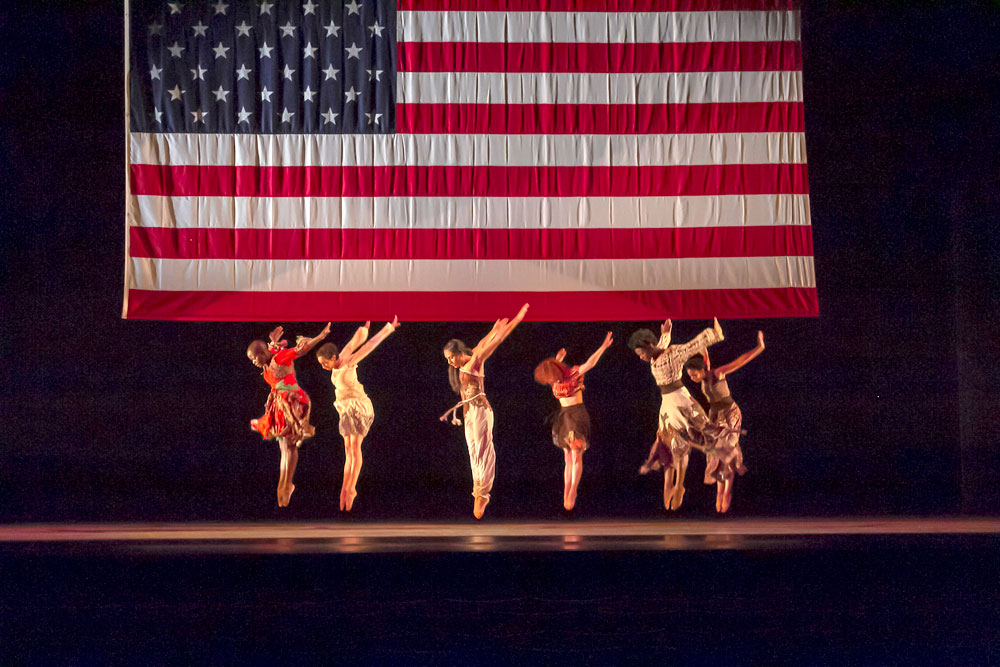
© Steve Wilson. (Click image for larger version)
Set to nine recordings ranging from raw, acoustic-guitar ballads to spirituals to an anthem against the Vietnam War, Odetta clearly commits to that very time and place, giving the piece its identity and limiting its effect. In contrast to the universality of Revelations (because of the ambitious storytelling and jukebox formats, comparisons are inevitable), which unites race, color and creed with a longing for relief from the troubles of the world, Odetta confronts those troubles head-on. Some of the songs are difficult to hear, especially in light of current strife here in America and worldwide. And however powerful their message, their dated style does not share the wide appeal of gospel music.
In the title role, Hope Boykin led ten dancers, dressed in ragged post-hippie garb, through vignettes with a generally literal approach to the lyrics. “Ox Driver Song” is a hoedown-y romp with cowboy kicks, galloping footsteps and rhythmic stomping, with streaked pink backdrop lighting that evokes a prairie sunset. During “Motherless Children,” the dancers sit on the modular set pieces and bounce as though they are on a bumpy train ride, a choreographic novelty that echoes the text of the lyrics but doesn’t dig enough into its anguished subtext.
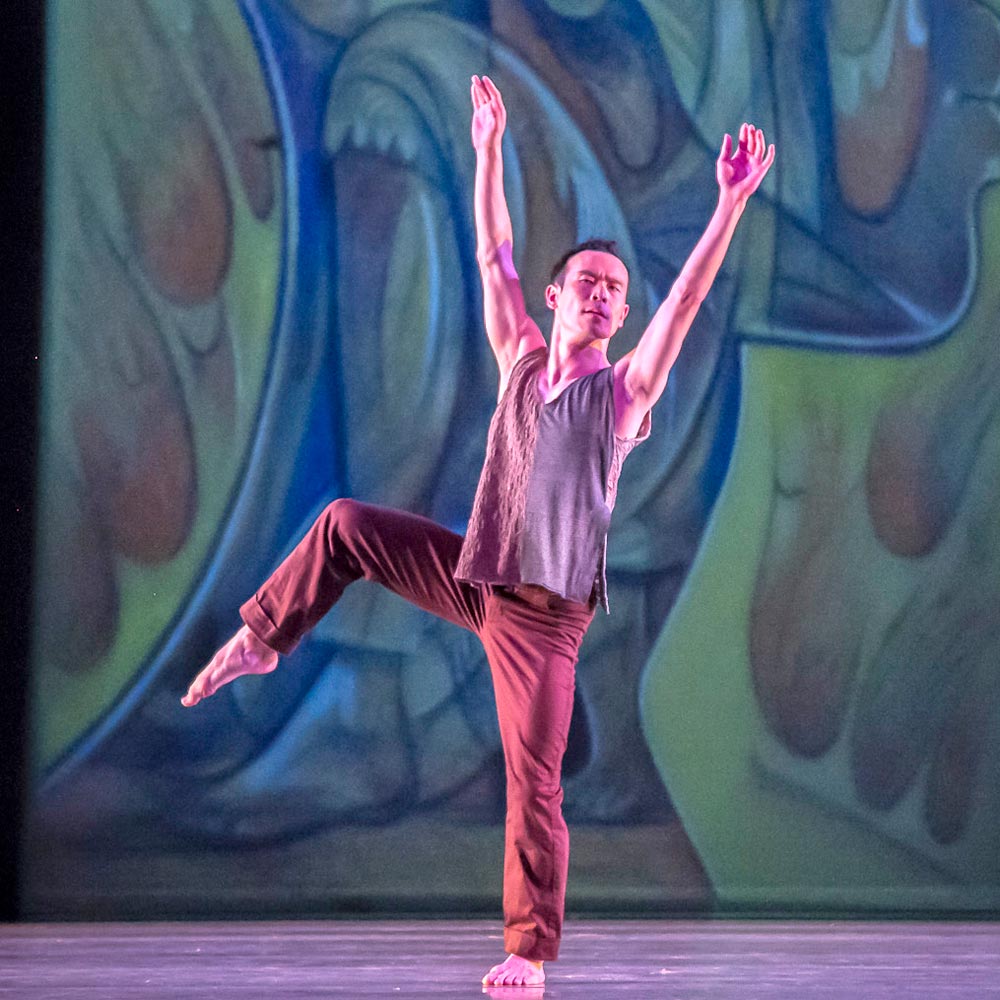
© Steve Wilson. (Click image for larger version)
Emotions ran deeper in “Cool Water,” an elegant pas de deux with Sarah Daley and Yannick Lebrun. Tall, leggy and lithe, they spooled and unfurled like statues come to life. He placed a hand on her head and lowered her down to his bent leg like a baptist in the river, her hands quivering with the spirit. Deeper still runs “Sometimes I Feel Like a Motherless Child,” set to a slavery-era spiritual. Kanji Segawa traversed the stage in a Horton-inspired adagio, achingly arching over his bent legs, raising his arms to the sky and opening his mouth in an unheard wail, relieved only when fellow dancers emerge to tenderly lift and carry him. In 1960, when Odetta recorded the song (and when Alvin Ailey choreographed Revelations) segregation was still the law, or the de facto practice, in much of the United States; to see black, white, Asian and Latino artists dancing together in such harmony was powerful testimony.
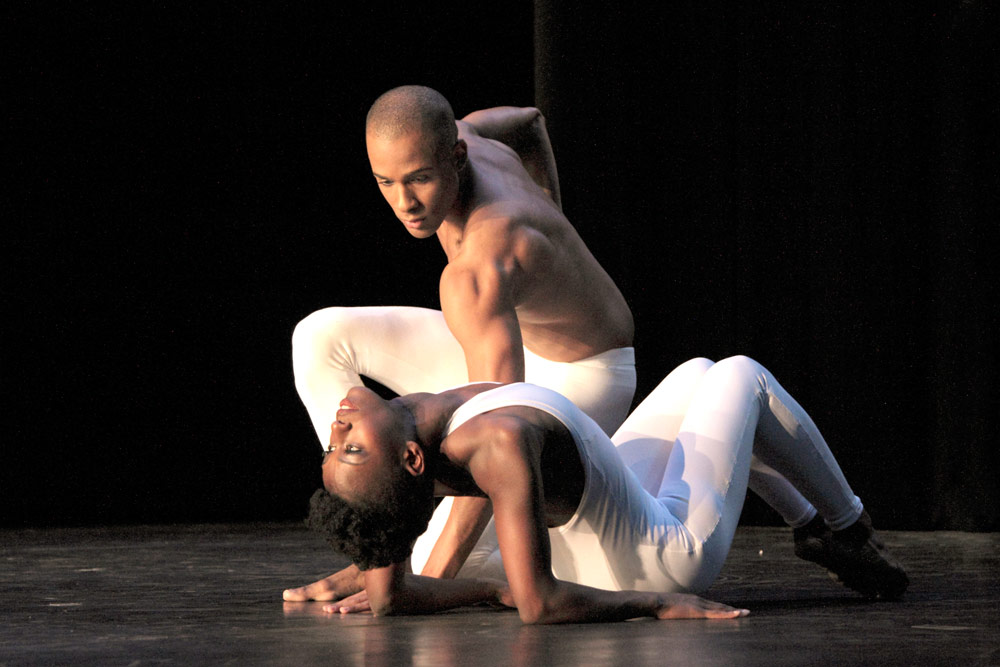
© Steve Wilson. (Click image for larger version)
I could have lived without the 80s-night redux of Ulysses Dove’s 1984 Bad Blood, with its sample-heavy, feedback-laced synth score by Laurie Anderson and Peter Gabriel. The choreography for three women and four men consists largely of whizzy jazz turns, erotic undertones and inventive leaps by the women into the men’s arms – Danica Paulos’s straddling leap onto Michael Francis McBride’s face is daring for more than one reason. None of it is easy to pull off, and the four men and three women dance it with marvelous style, but the music and the white unitards could be happily left in the vault. Sean Aaron Carmon set a muscular tone for the cast, which included veterans Linda Celeste Sims and Jamar Roberts in a strength-testing pas de deux; those two could dance the phone book and we’d all be rapt.
Kervin Douthit-Boyd righted the ship with David Parsons’s Caught, a flashy five-minute solo. Literally flashy – as Douthit-Boyd crisscrosses an unlit stage in leaps, bounds, hops and strides, a strobe light illuminates every move at its peak, catching him in airborne perfection and creating a deft illusion of hovering across the stage. Created in 1982 to Robert Fripp’s score of electronic beeps, tones and strings, Caught outlived the 80s with aplomb. Sadly for Ailey audiences, Kervin and husband Antonio Douthit-Boyd will leave the company at the end of the season to become co-artistic directors of the Center of Creative Arts in St. Louis, Missouri, so this run is their Berkeley farewell.
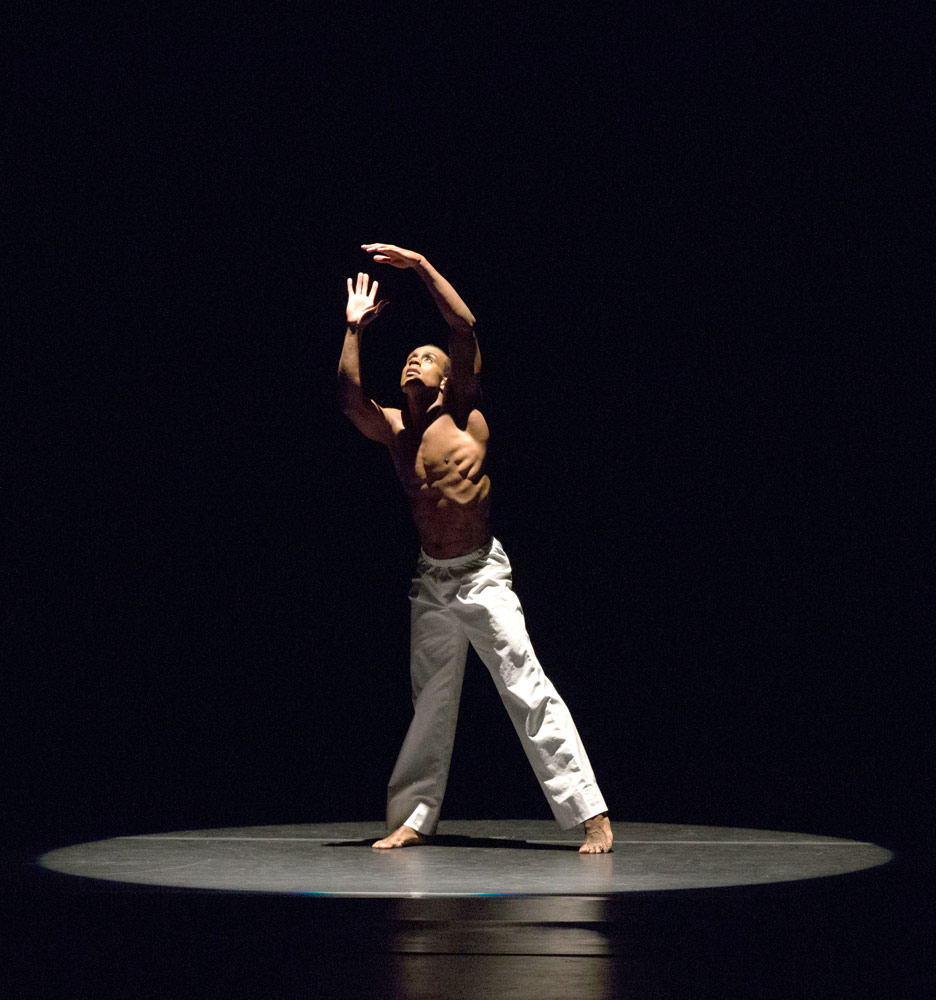
© Rosalie O’Connor. (Click image for larger version)
As always, the program closed with Revelations. Ailey’s masterpiece is as fresh, fun and technically dazzling as ever, and as crowd-lifting as a tent revival. The company danced it with an enthusiasm that only true professionals can bring to a piece they dance every single night; nonetheless, it takes a dazzling performance to get excited about a piece one sees so often. On opening night, Sims and husband Glenn Allen Sims gave that performance in “Fix Me, Jesus.” With their magnificent skill and their chemistry as a couple, they gave themselves to each other with utter faith, a quality I didn’t feel from the rest of the cast, virtuosic as they were. But that’s just me being a persnickety critic; from beginning to end, Berkeley received it with love.










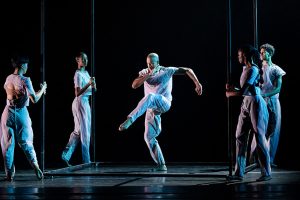
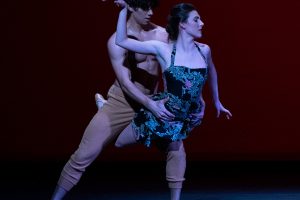



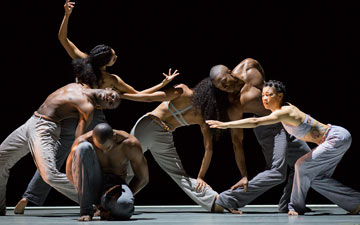
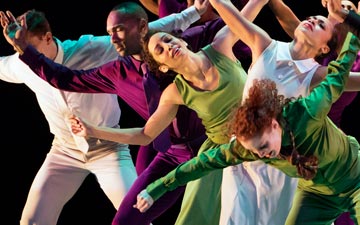
You must be logged in to post a comment.